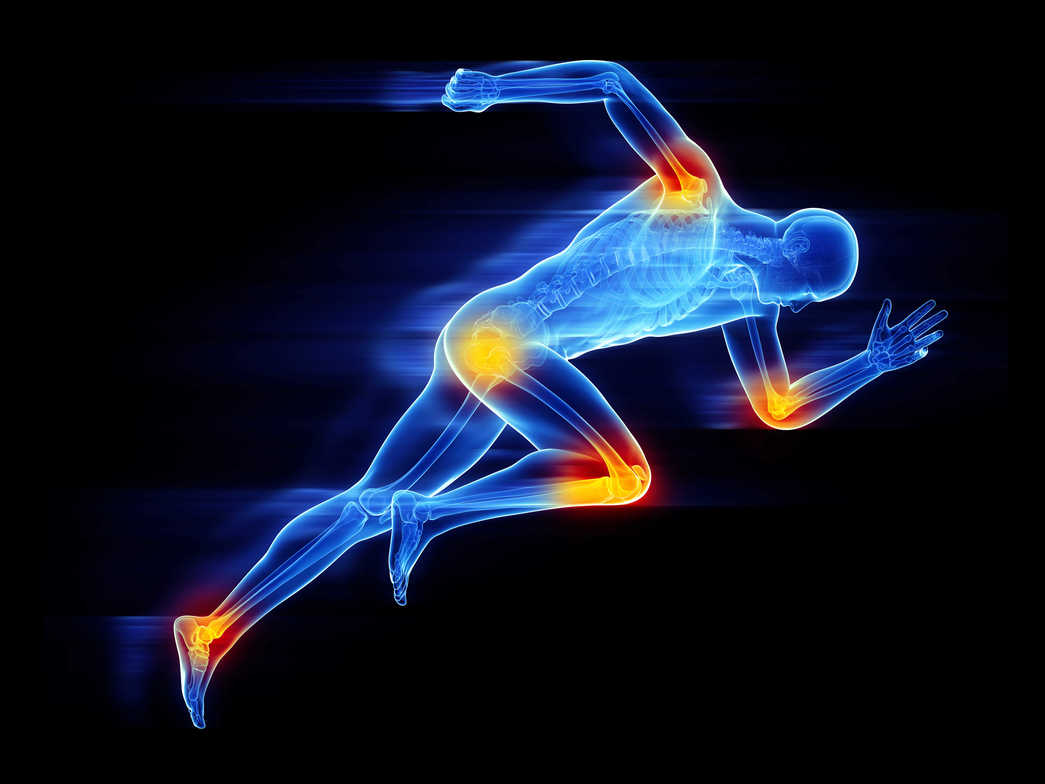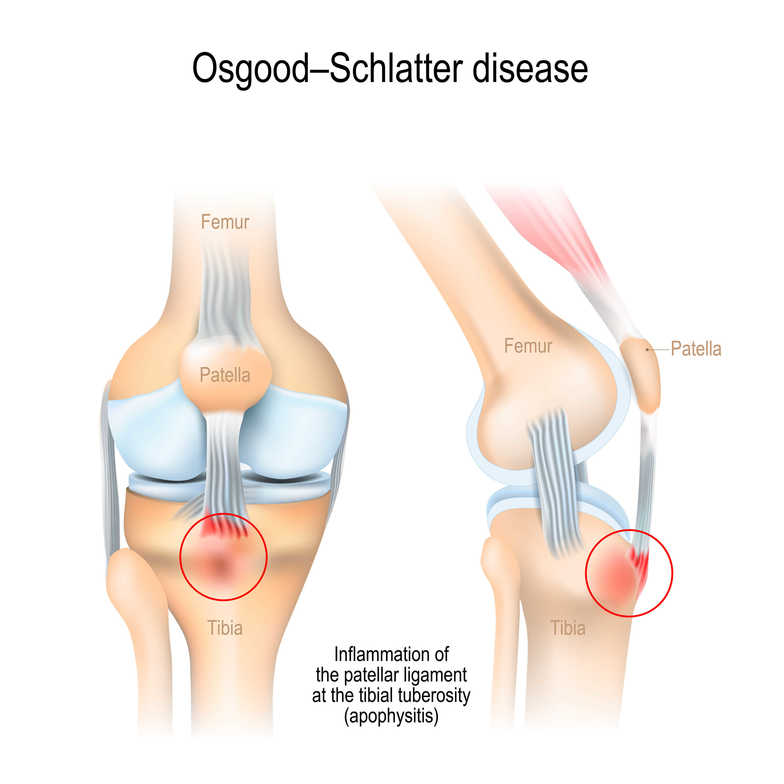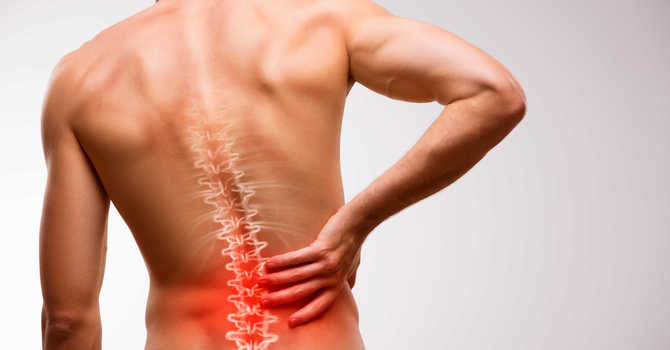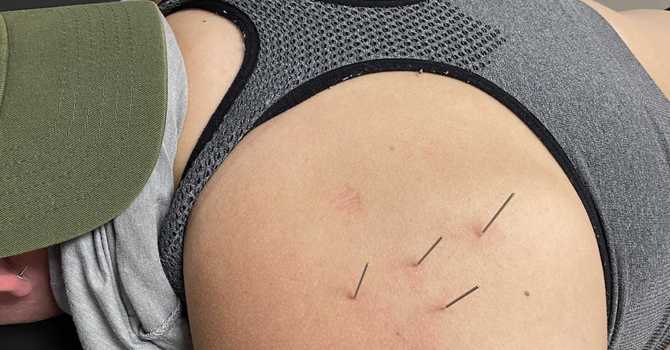
With the year-round sports calendar and the demand placed on youth athletes, it's no wonder why there are over 3 million youth sports injuries per year.
As a former athlete with my fair share of injuries, I know the frustrations that athletes and parents go through when playing time is missed.
Or even worse, when there is confusion about what is going on and what can be done to treat and prevent the next injury.
Too often, athletes are told to rest or deal with an injury, but at Skare Spine and Performance, we believe that rest shouldn’t be your only option. We provide effective sports chiropractic solutions to help you recover from injuries and perform at your best.
This blog will delve into seven different youth sports injuries, what causes them, and various treatment options.
1. Osgood Schlatter Disease
Also known as jumper’s knee, Osgood Schlatter presents with pain or tenderness on the lower part of the knee, known as the tibial tuberosity.
Youth athletes who play sports with a lot of running, jumping, and cutting are most susceptible to Jumper's Knee. Osgood Schlatter's is more commonly seen in males but can still occur in females.
This condition is a stress reaction of the tibial tuberosity, where the patella tendon attaches at a growth center. It causes pain and inflammation on the front side of the knee. Usually, this condition will occur when the athlete has growth spurts. Muscles, tendons, and ligaments struggle to keep up during bony growth spurts.

Due to high activity and growth spurts, the quadricep muscles can become tight. When the quadricep muscles are overly tight, this will create tension through the patella tendon and onto the growth center, causing pain and inflammation.
If severe enough, sometimes rest is advised. However, it is commonly a condition that an athlete can play through most of the time, especially with proper treatment.
We often have excellent results treating Osgood Schlatter’s.
Our first goal is to reduce tension and tightness of the quadriceps musculature to take stress off the tibial tuberosity. We achieve this with soft-tissue release and dry needling. We also teach the athlete specific stretches to perform before and after practice and at home to help speed up the healing process.
Hip stability is also important, as hip activation can take tension off the quadriceps musculature. Our Dynamic Neuromuscular Stabilization (DNS) rehab protocols are great for improving this.
2. Patellofemoral Pain Syndrome (PFPS)
Patellofemoral Pain Syndrome is also another condition that presents with knee pain.
However, unlike Osgood Schlatter’s, PFPS usually presents with dull and achy pain anywhere around the knee. This condition is more common in females and is usually painful with activity. PFPS can be one of those chronic and frustrating injuries that seem to linger on forever.
With PFPS and similarity to Jumper’s knee, restoring mobility to the quadriceps is important.
Athletes often become 'quad dominant,' which places more strain on the knee. Establishing hip control and stability is essential for treating PFPS to help control and stabilize the knee.
3. Ankle Sprains
Ankle sprains are one of the most common sports injuries, with over 2 million athletes spraining an ankle annually.
When an athlete sprains an ankle, they are 37x more likely to sprain their ankle again. However, proper therapy can reduce their chances of spraining their ankle again by 77%.
One of the biggest predictors of how soon an athlete will return to play is how quickly they can start weight-bearing and walking. The days of R.I.C.E. are done, and we want to start loading and progressing activities as soon as possible.
Dry Needling is one of our go-to’s to help decrease pain and swelling. We then start working on achieving full range of motion, increasing stability, and strengthening specific muscles around the foot and ankle.
Check out our Facebook post showing treatment for an acute ankle sprain (link here)
Also, check out our previous blog, "3 Things You Need To Know About Ankle Sprains Today."
4. Femoral Acetabular Impingement (FAI)
Femoral acetabular impingement presents with a sharp pinching hip pain when squatting or internally rotating the leg (turning the foot or leg inwards).
FAI often occurs in athletes who play rotational sports like baseball, hockey, and softball and in sports like dance and gymnastics.
There can be muscular or bony impingement with FAI. Bony impingements contain growth around the hip due to excess stress on the femur or hip socket, known as CAM or Pincer lesions. This pinching can be nagging and annoying and, if left untreated, can eventually cause labral issues.
Whether it is a bony or muscular impingement, our job is to increase "joint centration" to balance the musculature around the hip. When muscular stability is not ideal around the hip joint, it leads to improper movement patterns that can cause added stress on the muscles and bones around the hip joint. When better joint centration or hip activation is achieved, the hip shares the stress, resulting in better mobility and less pain.
5. Low Back Pain
Back pain is the most common condition people see us for at Skare Spine & Performance and is very common among athletes.
Often, back pain is multi-factorial, and we need to determine the cause of it to apply the appropriate treatment.
Faulty biomechanics in sports or lifting weights can often cause excess strain on the lower back muscles. One of the most important things we can do is to establish proper breathing and core stabilization mechanics. This will not only prevent injury but also help to enhance performance.
With any back pain, it is essential to look globally and determine if the cause is due to a lack of stability, joint mobility, faulty biomechanics, poor hip mobility, poor prolonged postures, or a combination of these elements.
6. Shin Splints
Shin Splints are among the most common running injuries, with around 40% of high school runners experiencing them during a track and field season.
Shin Splints, also known as Medial Tibial Stress Syndrome, typically present with pain on the inside of your calf, 2-3 inches above your ankle.
Pain over your tibia's medial side (inside of your shin bone) is four to six times more likely than Achilles tendinitis and plantar fasciitis, making it essential to know how to prevent it!
Medial tibial stress syndrome essentially causes micro-stress fractures to the lower leg bone, which is why this injury can be complex and long-lasting.
Once shin splints appear, they can nag and are hard to eliminate, so it's important to take a proactive approach. If severe enough, shin splints can progress into a stress fracture, with rest being the only option.
While there is no singular cause for shin splints, it is often attributed to increasing running intensity or mileage too fast. This injury is often known as “too far, too fast, too soon,” making it imperative to have your running on ramping mapped out. Calf weakness should also be addressed in working to help prevent shin splints.
Here’s how we treat shin splints:
- Soft-Tissue Release – we use fascial manipulation and muscle release techniques to help loosen up the calf musculature.
- Calf Strengthening – using the Toe Pro and DNS foot activation to help support the calf musculature.
- Calf Stretching – we use the Tri-Planar calf stretch to restore normal motion to the calf muscles.
- KT tapping can help increase proprioception and support the calf.
- Dietary Considerations - Addressing dietary factors like Vitamin D, magnesium, calcium, and protein intake to improve healing, especially since there is often trauma to the bone.
7. Sever’s Disease
Sever’s disease is the most common cause of heel pain in young athletes. Much like Osgood Schlatter's, this condition usually shows up during growth spurts and is a stress reaction on the growth plate at the base of the heel.
With Sever’s, overly tight calf musculature can create tension on the heel's growth center, causing pain and irritation.
Our first priority is loosening the calf musculature through soft tissue and stretching to take tension off of the growth plate.
It is also important to activate and strengthen the foot and calf muscles to help stabilize the foot and heel to take tension off the growth center.
Dry Needling is also an effective tool to help speed healing in Sever's.
Skare Spine & Performance | Rochester, MN
At Skare Spine & Performance, located in Rochester, MN, our sports chiropractic services incorporate joint manipulation, rehabilitation, soft tissue release, and dry needling to help you achieve pain-free movement in life and sport.
With any athlete, our goal is to keep them on the playing field and not on the sidelines with injuries. Please reach out if you or your youth athlete is dealing with any injury and to see how we can help.

Nate Skare
Contact Me


